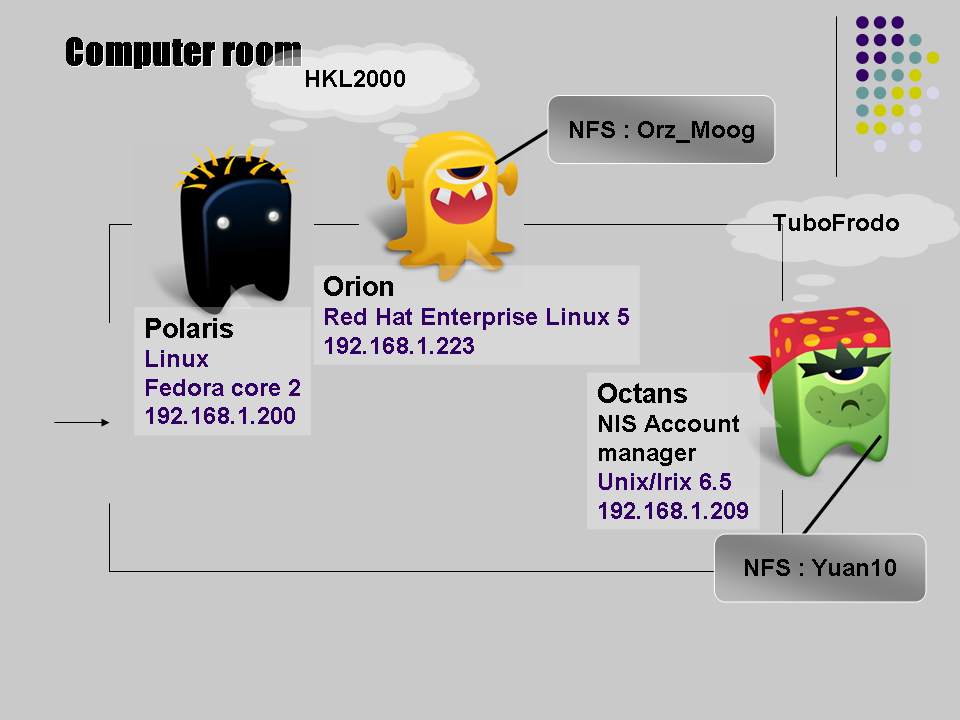1. Set up your own account
Please ask Godzella or Lauren to set up your account.
2. Where should I put my data?
a.raw data (image file)
/orz_Moog/data/the day you collect the data/sample information
b. processed data
User /yuan10/usr/your name/
You can read, write, copy and delete files in your folder.
You can read and copy files from other's folder,
You cann't write or delete files in other's folder (If you really hate someone and thirst to destroy their files, please contact the super users :) ).
Please remember to backup your data once in a while.
3. Compuer name and IP adress.

4. Basic Linux Commands
http://www.comptechdoc.org/os/linux/usersguide/linux_ugbasics.html (English)
http://dz.adj.idv.tw/thread-275-1-1.html (Chenses)
| pwd |
|
Show the name of the current working directory |
| |
more /etc/profile |
Lists the contents of the "/etc/profile" file to the screen one page at a time. |
| ls |
|
List files |
| |
ls |
List files in the current working directory except those starting with . and only show the file name. |
| cd |
|
Change directory |
| |
cd /home |
Change the current working directory to /home. The '/' indicates relative to root, and no matter what directory you are in when you execute this command, the directory will be changed to "/home". |
| |
cd httpd |
Change the current working directory to httpd, relative to the current location which is "/home". The full path of the new working directory is "/home/httpd". |
| |
cd .. |
Move to the parent directory of the current directory. This command will make the current working directory "/home. |
| |
cd ~ |
Move to the user's home directory which is "/home/username". The '~' indicates the users home directory. |
|
cp
|
|
Copy files |
| |
cp myfile yourfile |
Copy the files "myfile" to the file "yourfile" in the current working directory. This command will create the file "yourfile" if it doesn't exist. It will normally overwrite it without warning if it exists.
|
| mv |
|
Move or rename files |
| |
mv myfile yourfile |
Move the file from "myfile" to "yourfile". This effectively changes the name of "myfile" to "yourfile". |
| rm |
|
Remove |
| |
rm filename
rm -rf forder name
|
remove the file.
remove the folder
|
| mkdir |
|
make folder |
| |
mkdir forder name
|
creat a folder.
|
5. Text editor
a. geditor
% gedit file name
b. vi
%vi file name
See http://hyuan.imb.sinica.edu.tw/missingdata/205_Protocol/vi_editor.doc
http://www.study-area.org/tips/vim/ (Chinese)
Bookmark/Search this post with:




